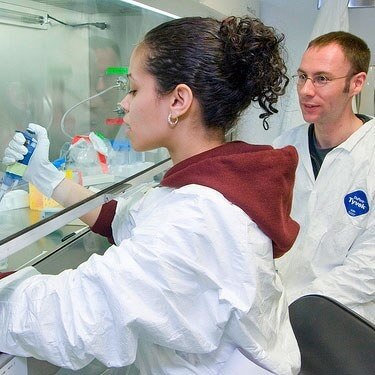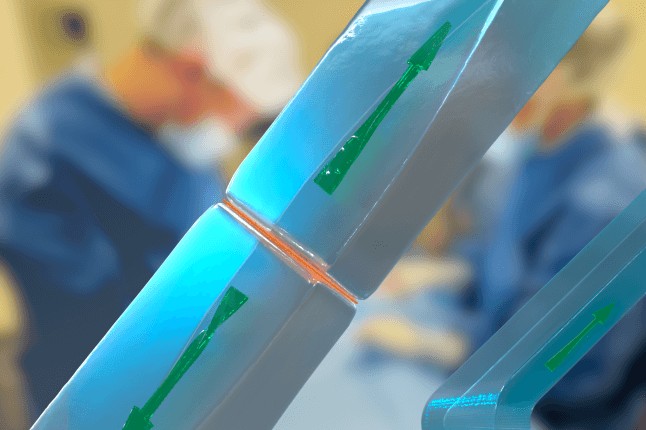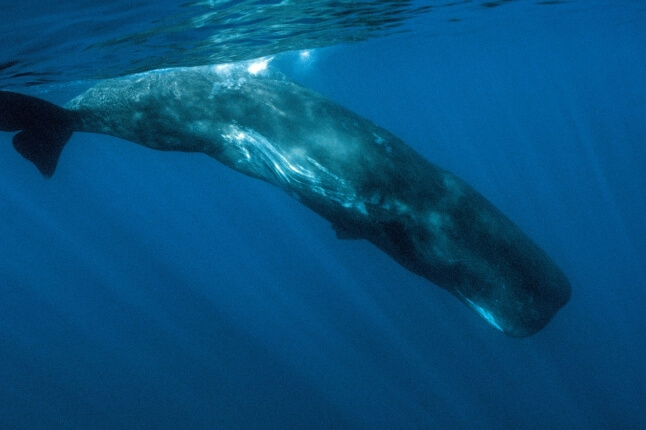News
At the March 2, 2010 meeting of the Faculty of Arts and Sciences (FAS), the faculty voted unanimously to approve a new, dedicated undergraduate concentration in Biomedical Engineering, to be managed by the Harvard School of Engineering and Applied Sciences (SEAS).
The effort, being led by SEAS faculty member David Mooney, Robert P. Pinkas Family Professor of Bioengineering; Associate Dean for Chemical/Biological Sciences and Engineering; and a Core Member of the Wyss Institute, is part of an ongoing effort to enhance school's curriculum.
The new concentration, something that was seeded several years ago during the deanship of Venkatesh "Venky" Narayanamurti, John A. and Elizabeth S. Armstrong Professor of Engineering and Applied Sciences and Professor of Physics, will likely be offered starting in the Fall of 2010. The program will be separate from, yet complement, the subject-specific tracks in the broader, existing Engineering Sciences concentration.
Focused on biology, chemistry, and engineering, the Biomedical Engineering concentration will cater in particular to premedical students and will serve as a template for other future programs.
In an interview in The Harvard Crimson, Mooney said, "Harvard has a responsibility to train the future leaders of this field."
Mooney is a member of Dean Murray's Steering Committee responsible for helping to devise and implement a faculty-led 10-year academic and administrative strategic plan for SEAS.
The academic strategic planning is organized around discipline areas. Dean Murray believes in educating “T-shaped” individuals, or those who have deep knowledge in a discipline but are able to collaborate across the boundaries of disciplines, as opposed to educating “mile-wide-but-inch-deep” individuals, or those who are interdisciplinary but have no intellectual depth.
The “T-shaped” approach is particularly important for enhancing undergraduate education, an activity that has become a top priority for SEAS. Her plan, as will be exemplified with the new Biomedical Engineering concentration, is to organize the teaching of concentrations and curriculum by relevant disciplines, keeping in mind the synergy between and among disciplines and the need to expose students to cross-disciplinary challenges.
The new degree is also expected to be popular among prospective and current College students. In fact, the number of declared concentrators in SEAS has increased by nearly 40% from the 2007-2008 academic year (the year that SEAS was launched as a school) to the present.
By degree, enrollment in Applied Mathematics has increased by 31%; Computer Science has increased by 39% and Engineering Sciences has increased by 57%. Within Engineering Sciences, the biomedical engineering track has remained one of the fastest growing and most popular over the past several years.
The College Admissions Office also reports that the percentage of applicants in the future class of 2015 expressing an interest in engineering has increased by 28% (from 11% to 14% of all applicants) compared to those in 2007.
Harvard’s commitment to engineering, demonstrated by the launch of SEAS, has begun to bear fruit: more current students are deciding to pursue our degree programs and prospective students seem more interested in considering the field.
More information about the new Biomedical Engineering concentration will be available in the coming months.
Topics: Bioengineering
Cutting-edge science delivered direct to your inbox.
Join the Harvard SEAS mailing list.



